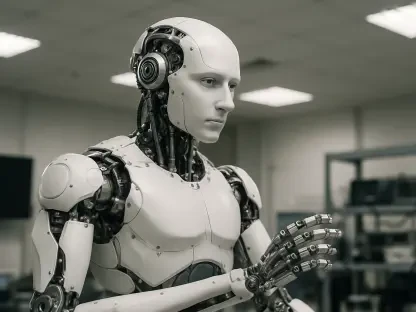In an era where digital dependencies deepen daily, cybersecurity has ascended to its rightful perch among the most critical domains. As cyberattacks grow in sophistication and frequency, the call for more advanced security measures is relentless. Rising to answer this call are artificial intelligence and automation technologies, poised to revolutionize the cybersecurity landscape. These technological paradigms promise enhanced threat detection, rapid automated responses, and strategic forensics, potentially bolstering the defenses of critical infrastructure across sectors.
Unpacking AI and Automation in Cybersecurity
Central to the unfolding transformation in cybersecurity are AI and automation technologies. These technologies offer innovative methods for identifying, predicting, and responding to cyber threats. Machine learning serves as a backbone, enabling systems to analyze vast data sets and recognize patterns that might signal an impending threat. Pattern recognition facilitates enhanced anomaly detection, providing a more robust defense against increasingly sophisticated threat vectors. Together, these tools are not merely augmenting security frameworks; they are redefining them, thereby underlining their paramount importance in today’s digital security strategies.
A standout feature of these technologies is their ability to automate threat responses. Automated systems can react to cyber threats in real-time, effectively reducing reliance on human intervention. This minimizes error margins and accelerates response times—keys to mitigating heavy losses during security breaches. Consequently, automation stands as a bulwark against the chaotic nuances of modern cyber threats, underscoring its critical role in establishing dynamic defense mechanisms.
Features and Performance Insights
The role of machine learning in cybersecurity cannot be overstated. By harnessing the power of algorithms and data analytics, machine learning can identify potential cyber threats before they manifest, allowing organizations to proactively adapt their defense strategies. Such predictive capabilities are invaluable for safeguarding crucial infrastructure, as cyber adversaries continually evolve their tactics to bypass traditional security measures.
Automated threat response systems further enhance security postures by providing immediate reactions to detected threats. These systems act autonomously, orchestrating defense mechanisms tailored to specific security incidents. The reduction in human error and increased response efficiency make automation a pivotal element in responding effectively to cyber threats.
Moreover, intelligent threat hunting and forensic tools are redefining investigative processes. These advanced systems proactively search for threats within a network, revealing vulnerabilities and providing unexpected insights. Their intelligent algorithms improve investigative efficiency, delivering a clearer view of potential risks and aiding in swift remediation efforts.
Real-World Implementations and Challenges
The integration of AI and automation is transforming various sectors, with industries ranging from healthcare to transportation embracing these technologies for robust cybersecurity measures. In healthcare, automation is deployed to protect sensitive data and devices from ransomware attacks, addressing vulnerabilities within biotech software. Meanwhile, in transportation, AI enhances traffic management systems, safeguarding against potential disruptions.
Nonetheless, integrating AI and automation in cybersecurity is not without its challenges. Technical difficulties, regulatory hurdles, and market dynamics continue to pose significant obstacles. Efforts to navigate these challenges include developing tools that automatically patch vulnerabilities and collaborating with regulatory bodies to ensure compliance with stringent cybersecurity standards.
Future Prospects and Innovations
Looking ahead, the potential for breakthrough developments in AI and automation technology promises to strengthen the cybersecurity terrain further. Emerging innovations suggest enhanced adaptability of AI systems, allowing for more precise threat anticipation and agile defensive postures. These advances are poised to transform the cybersecurity field, driving it toward more comprehensive and secure frameworks.
AI’s evolving capabilities could redefine standard cybersecurity practices, potentially leading to revolutionary solutions that surpass current methodologies. The proliferation of these technologies in the cybersecurity space opens avenues for unprecedented innovation, presenting opportunities to anticipate and counteract future cyber threats with greater precision and effectiveness.
Verdict and Key Takeaways
In conclusion, AI and automation represent frontline technologies crucial to modernizing cybersecurity practices. While challenges regarding integration and regulatory compliance remain pertinent, the progressive embrace of these solutions underscores their transformative potential. The evolution of AI and automation promises not only fortified defense mechanisms but also a paradigm shift in how organizations approach cybersecurity. As industries continue to adapt to a rapidly changing threat landscape, these technologies will undoubtedly play an increasingly critical role in shaping future security strategies.









